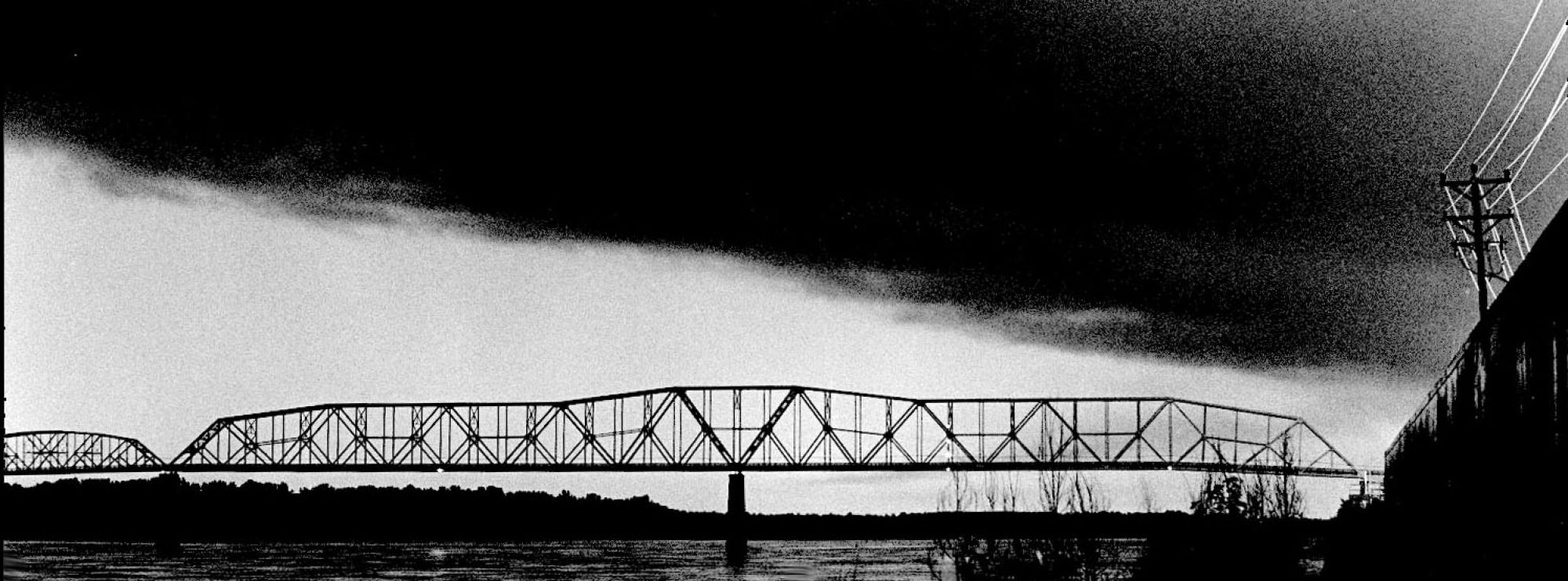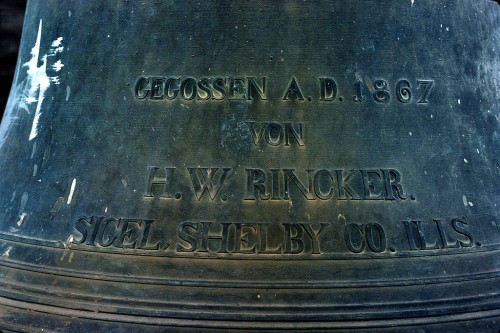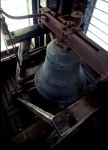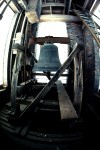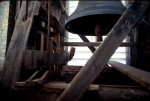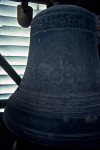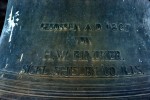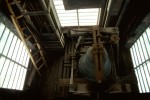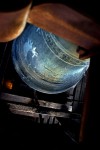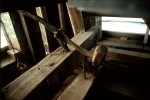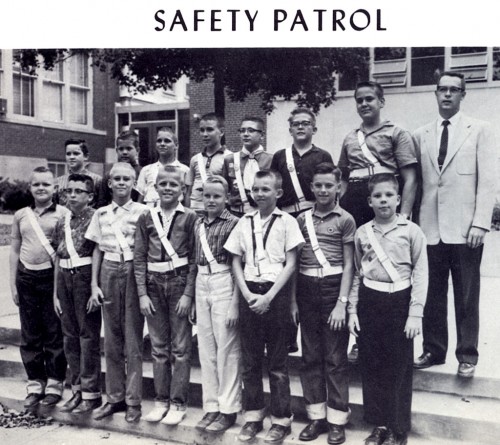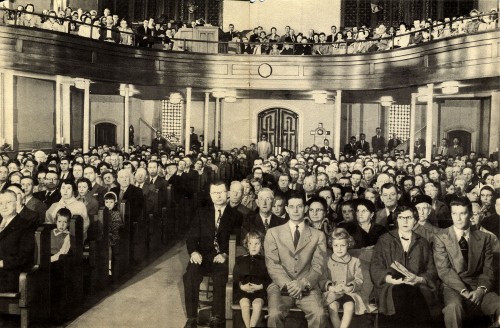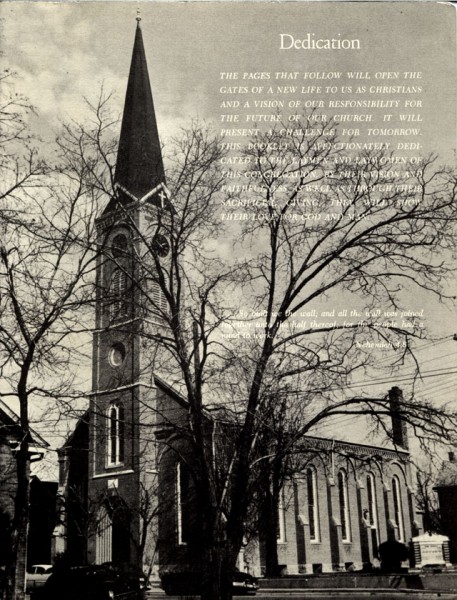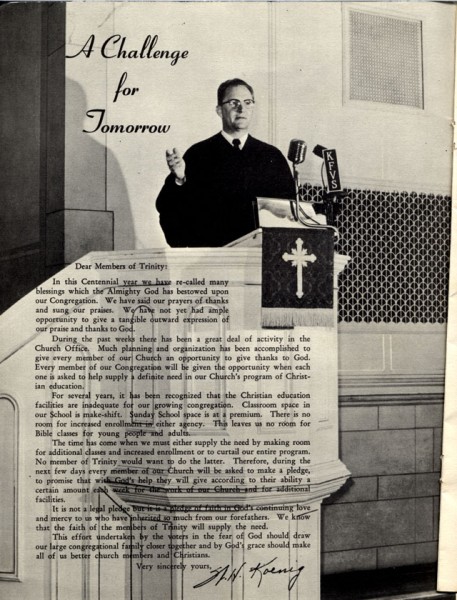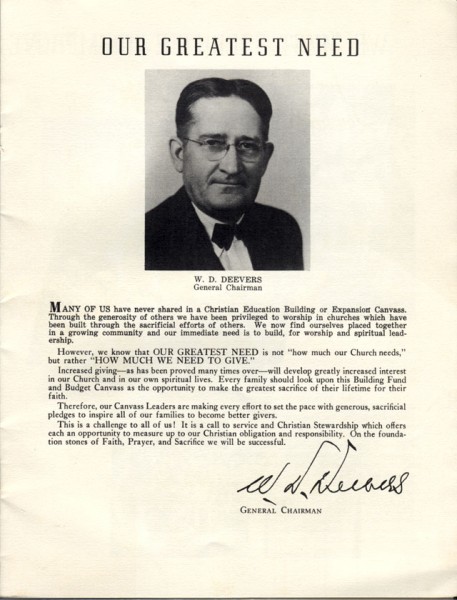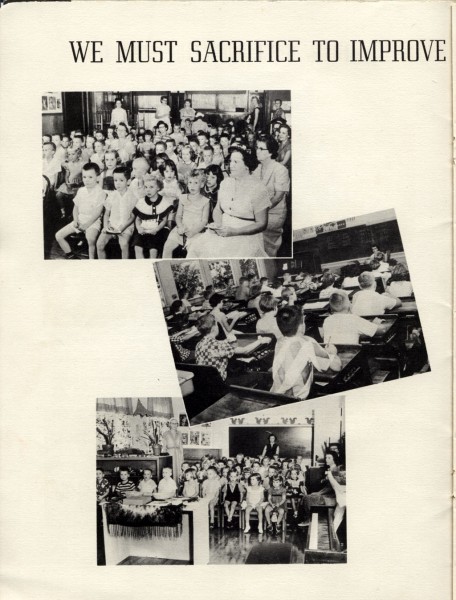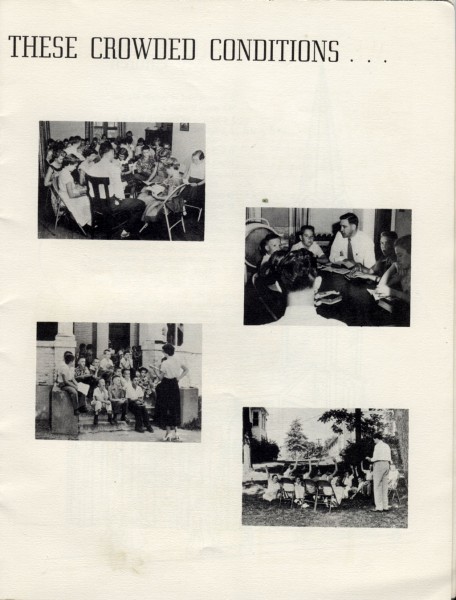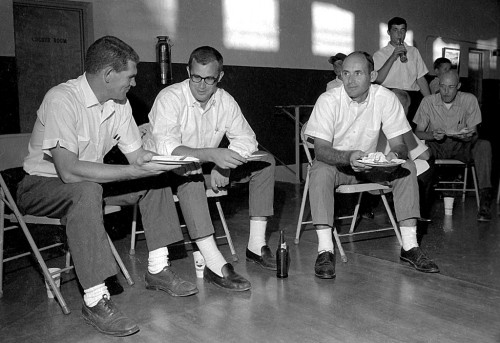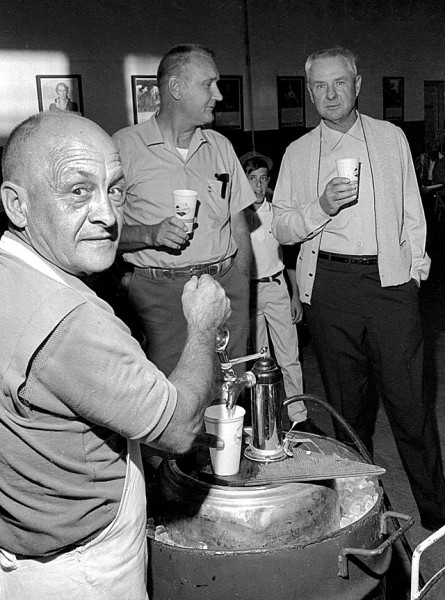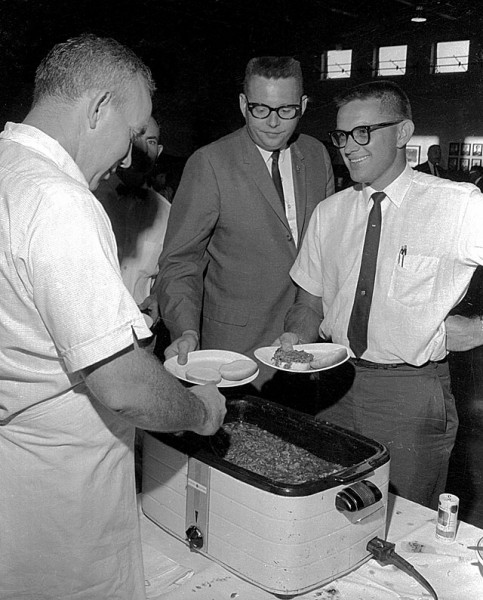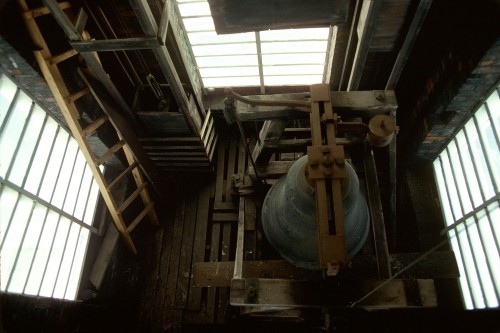 I mentioned that my brother Mark, and I did the best we could to document the old Trinity Lutheran Church before it was torn down. I decided to run the photos over a period of time rather than dumping them all at once. These photos were taken of the bell in the bell tower in August of 1978. (I’ll deal with the clock later.) As always, click on any image to make it larger.
I mentioned that my brother Mark, and I did the best we could to document the old Trinity Lutheran Church before it was torn down. I decided to run the photos over a period of time rather than dumping them all at once. These photos were taken of the bell in the bell tower in August of 1978. (I’ll deal with the clock later.) As always, click on any image to make it larger.
How’d the bell-ringer know when to ring?
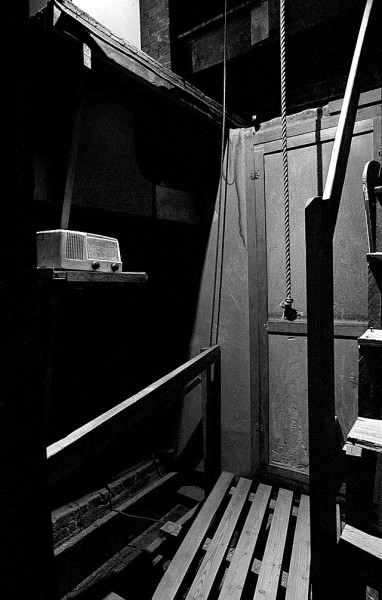 He’d listen to the service on the radio shown here on the left.
He’d listen to the service on the radio shown here on the left.
Black and white was better
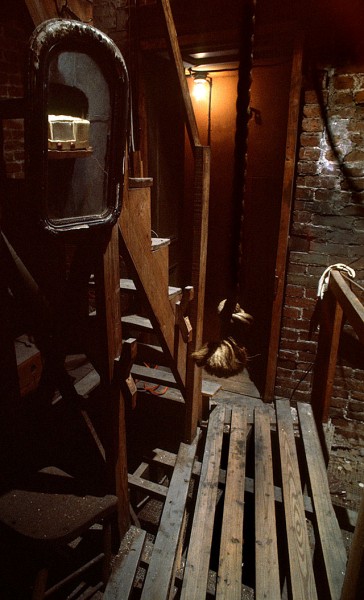 This is one of those cases where the photo worked better in black and white. Note how wavy the glass in the mirror is.
This is one of those cases where the photo worked better in black and white. Note how wavy the glass in the mirror is.
Bell striker looked like sledge hammer
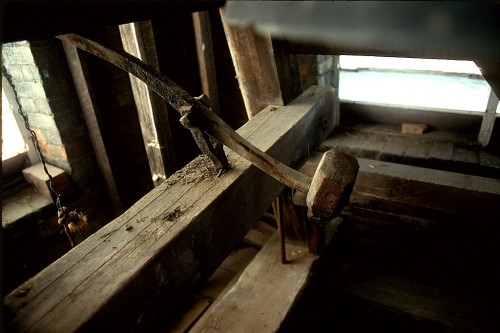 The bell had a clapper hanging inside it like you normally see, but it also had something that looked like a sledge hammer that could serve as a striker. I’m sure someone will be able to explain when it was used.
The bell had a clapper hanging inside it like you normally see, but it also had something that looked like a sledge hammer that could serve as a striker. I’m sure someone will be able to explain when it was used.
Bell bought in 1866?
You never know who to believe. The bell has a date of 1867 on it. A Sept. 1, 1937, Missourian story quotes Theodore Bock, 84, 214 North Lorimier street, as saying that the bell was bought in 1866.
“Mr. Bock was a lad of 12, and was a pupil at the church’s school when the bell arrived. The church, then known as the Evangelical Lutheran Church, was on William Street, east of Frederick street. The first day the 5-foot bell was up, he recalls, it was rung all day by children and adults. Rev. Riedel was pastor at that time.
“The bell, when moved to the present Trinity Lutheran Church, Mr. Bock says, was placed above the clock. He states he does not know who did the work high in the air when the steeple was built, but said it might have been Mr. Fisher or Mr. Hoer, who were two of the No, 1 carpenters in Cape Girardeau in those days.”
Bell set by Bernard Bremermann
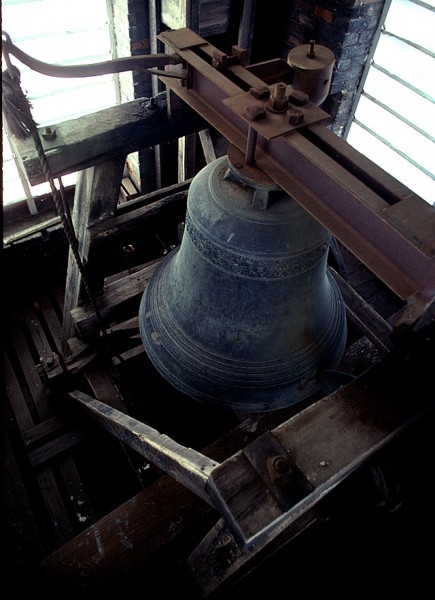 A Sept. 3, 1937 Missourian story said, “…it has been revealed that the late Bernard Bremermann, father of Mrs. Alvine Owens and Mrs. Rose B. Gordon, 324 North Ellis street, Herman Bremermann, 315 Broadway, and John H. Bremermann, 19 North Fountain St., placed the heavy bell high in the steeple where it is now.
A Sept. 3, 1937 Missourian story said, “…it has been revealed that the late Bernard Bremermann, father of Mrs. Alvine Owens and Mrs. Rose B. Gordon, 324 North Ellis street, Herman Bremermann, 315 Broadway, and John H. Bremermann, 19 North Fountain St., placed the heavy bell high in the steeple where it is now.
Bremermann was a spectator, while those working at the steeple were wondering how to get the heavy bell up so high. Having been a sailor, Mr. Bremermann was schooled in climbing and volunteered to do the job. Mrs. Owens recalled that she was a child in grade school when her father came home telling of the incident. Mr. Bremermann was a merchant on Broadway. He had left home when he was 16 years old to go on a sailing vessel and had been a pilot on the Gulf of Mexico for years before coming here.”
Moved to new church
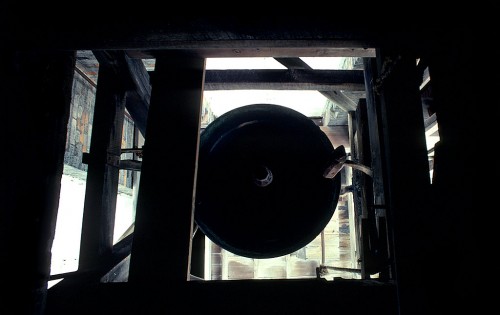 I wasn’t there to capture the setting of the bell at the new Trinity Lutheran Church like I was when the First Presbyterian Church bell was hung in 1965, but another Missourian photographer was.
I wasn’t there to capture the setting of the bell at the new Trinity Lutheran Church like I was when the First Presbyterian Church bell was hung in 1965, but another Missourian photographer was.
The caption said “Lee Underwood and Ed Meinz of the Walter Brockmiller Construction Co., carefully lower a girder that will be attached to the crown of the Trinity Lutheran Church bell, which was hoisted Thursday into the tower of the church under construction at Themis and Frederick. Underwood and Meinz are standing in the tower shortly after the bell, part of the original Trinity Lutheran Church, was lowered into the tower by a crane.”
(Actually, The Missourian said it was lowered by a “crain” in the June 19, 1981, cutline. I guess that reporter hadn’t been around many construction jobs.)
Gallery of bell photos
Click on any photo to make it larger, then click on the left or right side of the image to move through the gallery.
